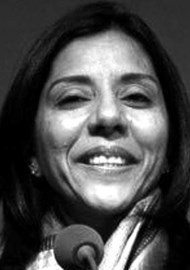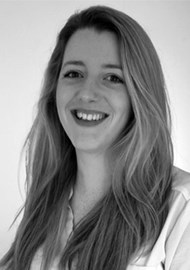Shelly Chadha works at the World Health Organisation as the Medical Officer for ear and hearing care. Here, Alex Griffiths-Brown interviews her to find out more about her career, challenges she’s faced and her ambitions for the future.
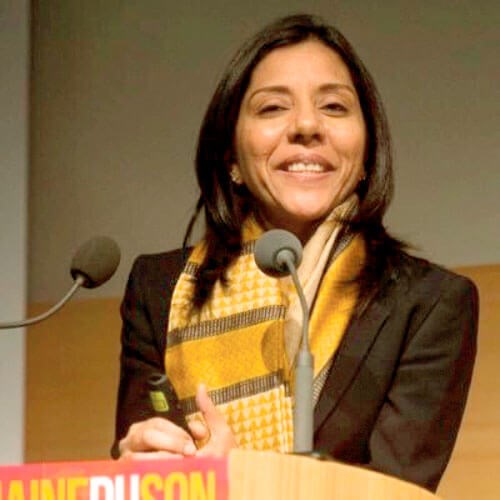
Shelly Chadha.
Tell us about how and where your career began.
I started out as a young otolaryngologist working in the public health system of India. For nearly 20 years, I worked as a clinician and teacher (assistant professor, associate professor and professor) of otolaryngology, in leading medical schools affiliated to tertiary hospitals in India.
Could you explain for those readers who aren’t aware, what your current role with the WHO is and what it involves? How did you come to be interested in the area of public health?
My current role in WHO is about driving public health action for making ear and hearing care (EHC) services accessible in all parts of the world. This includes undertaking advocacy for prioritisation of EHC; driving policy formulation; providing technical support to countries; and developing technical resources (e.g. guidelines, training resources, toolkits etc) that can promote and support the provision of EHC services. I am based at the WHO headquarters in Switzerland, where I am part of a team of dedicated professionals working in different areas including vision, rehabilitation and disability as well as with hearing.
“Working in public hospitals of India, I soon realised that patients who managed to reach us and gain care, represented only the tip of the iceberg”
When I started my career, I never dreamed that I would land up in this role. All I wanted was to be a good clinician and surgeon, and do well by my patients. However, working in public hospitals of India, I soon realised that patients who managed to reach us and gain care, represented only the tip of the iceberg. The vast majority of people that require ear and hearing care services were either unaware of their need or were unable to access the care which was available only at large hospitals. Participating in community outreach initiatives made me understand that, through public health practice, I could expand my reach to a much larger number of people, and perhaps be able to reach those who live with ear diseases and hearing loss in underserved parts of the country. This prompted me to undertake doctoral studies in this exciting discipline.
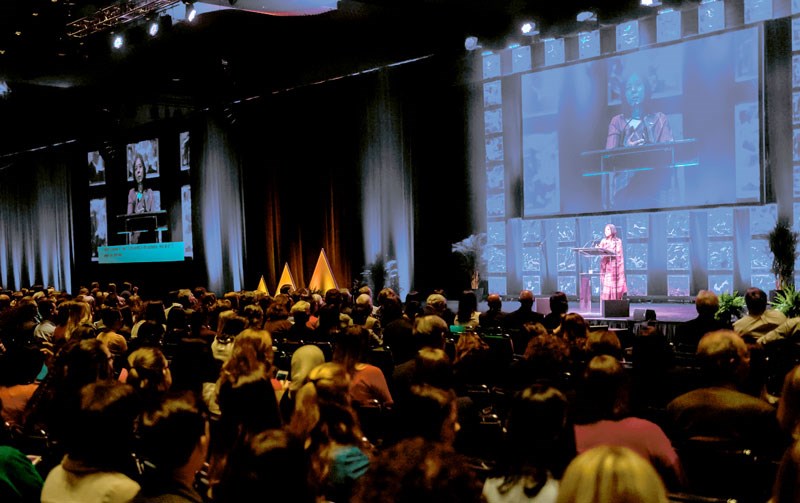
Shelly Chadha promoting public health perspective on hearing care among professionals.
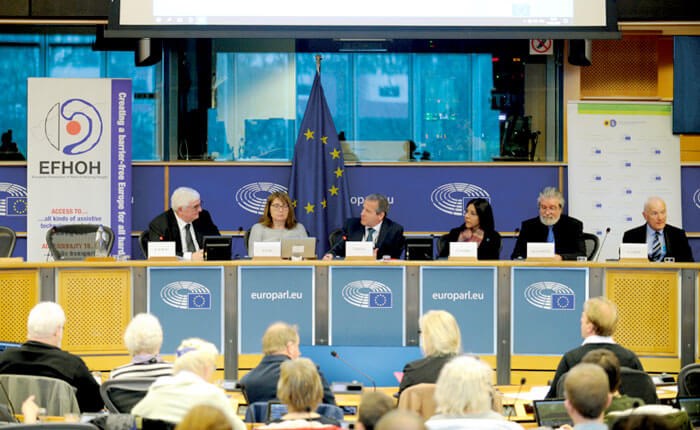
Advocacy for prioritisation of hearing care: at the European Parliament in Brussels.
During this time, I had the opportunity to work closely with the Health Ministry in India to develop its national strategy for hearing loss. Through WHO’s office for South East Asia region and its Sound Hearing 2030 initiative, I also got a chance to work with other countries in the region. So, when the current position opened in WHO headquarters, I felt that I was ready to translate the knowledge and experience gained in my country and region to rest of the world.
Have there been any challenges during your career progression? How did you overcome them?
I have been extremely lucky to have had some wonderful mentors and get amazing opportunities in my life; and in seizing these have faced a couple of difficulties as well. The biggest challenge I faced was that, somehow, public health practice of ENT was (and still is) not considered as part of mainstream clinical work. It is commonly considered to be ‘extra work’ that you do if you have time to spare. Hence it was a challenge to carry a full clinical and teaching load as well as manage my young family, while ‘indulging’ myself by undertaking different public health activities: school screenings, rural camps, advocacy for ear and hearing care, and policy planning.
It was the unconditional understanding I received from my family as well as the encouragement of my teachers and mentors that strengthened my resolve to follow my heart and kept me moving forward.
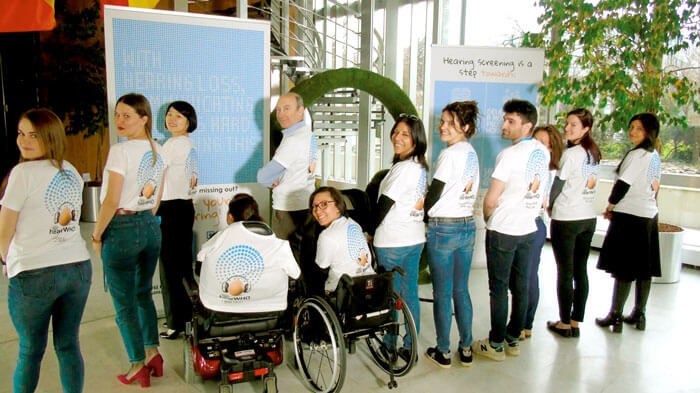
Working with an awesome team (on vision, hearing, rehabilitation and disability) in WHO.
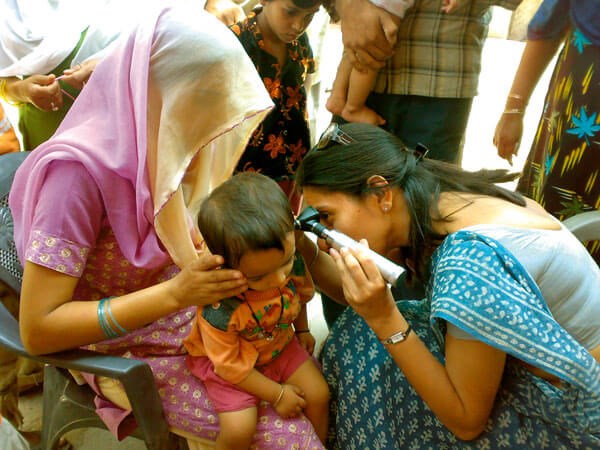
At home doing community outreach in India.
What has been the achievement that you are most proud of?
I feel truly blessed for raising three wonderful kids. Two that were born to me and have grown to be kind and thoughtful adults, who are carving their own way in this world. And the third, my adopted baby, ‘the WHO programme for ear and hearing care’ that has required as much attention and nurturing as the other two; my little one, that still requires handholding as it learns to walk.
Seeing this programme grow and thrive, as well as working with amazing and dedicated colleagues who share my passion, is a source of great personal and professional satisfaction. I feel especially pleased with the acceptance ear and hearing care is now receiving from other public health fields. As the outcome of advocacy undertaken by WHO and partners in this field, we are seeing the integration of hearing screening and devices in care of older adults [1]; inclusion for hearing loss as a modifiable risk factor for dementia [2]; increasing importance given to hearing as a key contributor for childhood development [3]; focus on hearing loss prevention in management of multi-drug resistant tuberculosis (MDR-TB) [4]; implementation of safe listening features in smartphones and other devices [5,6]. These examples are evidence of mainstreaming of hearing care and represent small but firm steps in the direction of sustainable ear and hearing care.
Are there any challenges in your current role? How do you hope to overcome them?
There is so much to do in this field and I have a constant sense of urgency; of time running out. However, there are limited hours in a day and days in a year; and few resources. The challenge is to achieve that balance which can optimise the time and resources available to sustain professional excellence while also maintaining a work-life balance. I am still struggling to find that magic formula. My greatest encouragement is knowing that I am not alone in this journey. Many like-minded colleagues and partners are in this struggle along with me. It also helps me greatly that my colleagues and I share good camaraderie, so that work is not a burden but actually feels fun. We try to learn from our failures and celebrate our small successes in order to keep ourselves motivated and keep delivering on this agenda.
What are your hopes, goals or ambitions for the future?
I hope that in the coming years, ear and hearing care will be established as an integral and inseparable part of the overall healthcare in countries across the world. The adoption and enthusiastic reception of a World Health Assembly Resolution on hearing loss in 2017 is cause for hopefulness and cheer [7] .
I feel optimistic that more and more professionals working in the sphere of ear and hearing care, are beginning to accept public health work as part of our professional responsibilities; and that future public health proponents will no longer have to face the challenges that I did.
Can you tell us some valuable advice you’ve been given or that you would give others in a leadership role?
I am inspired by the wise words of Mahatma Gandhi, who is considered the father of my nation (India). He said: “In a gentle way, you can shake the world. Be the change you want to see!”
References
1. World Health Organization. WHO guidelines for integrated care for older people (ICOPE).
www.who.int/ageing/publications/
guidelines-icope/en/
Last accessed July 2019.
2. Report of the Lancet Commission on dementia prevention, management and care.
www.thelancet.com/
commissions/dementia2017
Last accessed July 2019.
3. Olusanya BO, Davis AC, Wertlieb D, et al. Developmental disabilities among children younger than 5 years in 195 countries and territories, 1990–2016: a systematic analysis for the Global Burden of Disease Study 2016. The Lancet Global Health 2018;6(10);e1100-21.
4. World Health Organization. WHO consolidated guidelines on drug-resistant tuberculosis treatment.
https://apps.who.int/iris/bitstream/
handle/10665/311389/
9789241550529-eng.pdf
Last accessed July 2019.
5. World Health Organization. WHO-ITU global standard for safe listening devices and systems.
www.who.int/deafness/make-listening-safe/
standard-for-safe-listening/en/
Last accessed July 2019.
6. Ashworth B. Apple’s ‘noise’ app is designed to save you from yourself.
www.wired.com/story/apple
-watch-noise-app/
Last accessed July 2019.
7. WHA Resolution on prevention of deafness and hearing loss, adopted by the World Health Assembly.
http://apps.who.int/gb/ebwha/
pdf_files/WHA70/A70_R13-en.pdf?ua=1
Last accessed July 2019.



